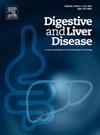Evaluating Post-Transplant Outcomes in Elderly Liver Recipients: A Comparative Study of Patients Aged Over 70
IF 3.8
3区 医学
Q1 GASTROENTEROLOGY & HEPATOLOGY
引用次数: 0
Abstract
Background
The increasing average age of the population has led to a higher percentage of elderly patients awaiting liver transplantation (LT). However, advanced age has been considered an independent risk factor for candidates. This study aims to evaluate post-transplant outcomes in patients over 70 years, traditionally viewed as an age limit for LT.
Methods
We performed a prospective analysis of 584 liver transplant recipients at our center between January 2018 to November 2023, dividing them into two groups: under 70 years (n=548) and over 70 years (n=36). Categorical variables were reported as numbers and percentages, while continuous variables were expressed as medians and interquartile ranges (IQR). The two groups differed significantly only in MELD and cirrhosis etiology. To reduce selection bias, we performed propensity score matching (PSM) at a 3:1 ratio, without replacement, based on MELD and cirrhosis etiology.
Results
The median age was 58 years (IQR 52-63) in the younger group and 71 years (IQR 70-72) for the older group (p<0.001). Viral cirrhosis was more frequent in younger group patients (36.1% vs 13.1 %), while MASLD was more common in those over 70 (13.1% vs 25 %) (p=0.013). The MELD scores were lower in patients over 70 (13, IQR 9-17) compared to the young group (15, IQR 10-23) (p=0.032). Both groups were homogeneous in sex and BMI (p>0.05). No significant differences were observed in cirrhosis-related complications (ascites, encephalopathy, portal hypertension, jaundice, coagulopathy, varices, hepatocellular carcinoma; p>0.05) or donor characteristics. Postoperative complications, including early allograft dysfunction, hepatic artery thrombosis, and biliary or cardiological complications, were also similar (p>0.05). The Comprehensive Complication Index was comparable (30.2, IQR 20.9–48.3 in <70 vs. 29.6, IQR 21–38.35 in ≥70; p=0.519), as was the 90-day readmission rate (p>0.05). After PSM, MELD scores and cirrhosis etiology were balanced between groups. No significant differences were shown in preoperative, donor, and postoperative characteristics.
Conclusions
With careful selection, patients over 70 years of age can achieve post-liver transplant outcomes comparable to younger patients. These findings suggest that advanced age alone should not be considered an absolute contraindication. Instead, a comprehensive, multidimensional assessment is essential to identify suitable candidates.
评估老年肝移植后的预后:一项70岁以上患者的比较研究
人口平均年龄的增长导致等待肝移植(LT)的老年患者比例上升。然而,高龄一直被认为是候选人的独立风险因素。本研究旨在评估70岁以上患者(传统上被视为肝移植的年龄限制)的移植后结局。方法我们对2018年1月至2023年11月在我们中心进行的584例肝移植受者进行了前瞻性分析,将他们分为两组:70岁以下(n=548)和70岁以上(n=36)。分类变量以数字和百分比报告,而连续变量以中位数和四分位数范围(IQR)表示。两组仅在MELD和肝硬化病因上有显著差异。为了减少选择偏差,我们根据MELD和肝硬化病因学,以3:1的比例进行倾向评分匹配(PSM),不进行替代。结果年轻组的中位年龄为58岁(IQR 52 ~ 63),老年组的中位年龄为71岁(IQR 70 ~ 72) (p < 0.001)。病毒性肝硬化在年轻组患者中更为常见(36.1%比13.1%),而MASLD在70岁以上患者中更为常见(13.1%比25%)(p=0.013)。70岁以上患者MELD评分(13分,IQR 9-17分)低于年轻组(15分,IQR 10-23分)(p=0.032)。两组在性别和BMI上均无差异(p>0.05)。肝硬化相关并发症(腹水、脑病、门脉高压、黄疸、凝血功能障碍、静脉曲张、肝细胞癌;p < 0.05)或供体特征无显著差异。术后并发症,包括早期同种异体移植物功能障碍、肝动脉血栓形成、胆道或心脏并发症,也相似(p>0.05)。综合并发症指数具有可比性(≥70的患者IQR为20.9 ~ 48.3,≥70的患者IQR为29.6,IQR为21 ~ 38.35,p=0.519), 90天再入院率也具有可比性(p = 0.05)。PSM后,MELD评分和肝硬化病因在组间平衡。术前、供体和术后特征均无显著差异。结论经过精心选择,70岁以上患者的肝移植后预后与年轻患者相当。这些发现表明,高龄不应被视为绝对禁忌症。相反,一个全面的、多维的评估对于确定合适的候选人是必不可少的。
本文章由计算机程序翻译,如有差异,请以英文原文为准。
求助全文
约1分钟内获得全文
求助全文
来源期刊

Digestive and Liver Disease
医学-胃肠肝病学
CiteScore
6.10
自引率
2.20%
发文量
632
审稿时长
19 days
期刊介绍:
Digestive and Liver Disease is an international journal of Gastroenterology and Hepatology. It is the official journal of Italian Association for the Study of the Liver (AISF); Italian Association for the Study of the Pancreas (AISP); Italian Association for Digestive Endoscopy (SIED); Italian Association for Hospital Gastroenterologists and Digestive Endoscopists (AIGO); Italian Society of Gastroenterology (SIGE); Italian Society of Pediatric Gastroenterology and Hepatology (SIGENP) and Italian Group for the Study of Inflammatory Bowel Disease (IG-IBD).
Digestive and Liver Disease publishes papers on basic and clinical research in the field of gastroenterology and hepatology.
Contributions consist of:
Original Papers
Correspondence to the Editor
Editorials, Reviews and Special Articles
Progress Reports
Image of the Month
Congress Proceedings
Symposia and Mini-symposia.
 求助内容:
求助内容: 应助结果提醒方式:
应助结果提醒方式:


